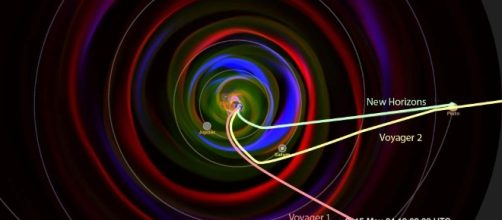Recent political and technological developments have allowed space planners to dream big for the first time in some years. One such big idea consists of a fusion powered and propelled probe to Pluto that would consist of a lander and an orbiter According to the Next Big Future, the concept is based on the Princeton Field-Reversed Configuration (PFRC) fusion reactor under development at the Princeton Plasma Physics Laboratory. It is an integrated power and propulsion system that could change the way long distance space exploration is conducted.
The Direct Fusion Drive (DFD) concept would deliver 1000 kilograms of payload into Pluto orbit after a four or so years.
The concept allows for high bandwidth communications back to Earth and the powering of the lander from orbit in the range of one to two megawatts. The abundance of energy would enable a number of options for a suite of instruments for both the orbiter and the lander. The probe could be launched on a broad range of available launch vehicles.
The New Horizons mission to Pluto revealed that former (and perhaps future) ninth planet of the solar system to be a strange, new world, with glaciers made of nitrogen ice and mountains of compacted water ice. Pluto showed a wide variety of geophysical processes, including “glaciological and surface–atmosphere interactions as well as impact, tectonic, possible cryovolcanic, and mass-wasting processes,” according to the initial findings of the New Horizons team.
If any world in the solar system cries out for a follow-on mission, it is Pluto.
With new interest being directed toward Outer Planets exploration, the DFD concept could prove to be invaluable if brought to fruition. NASA recently announced new discoveries that indicate that life may exist in the subsurface oceans of Saturn’s moon Enceladus and Jupiter’s moon Europa. The Europa Clipper, a more conventional probe than one using the DFD concept, is already manifested along with a possible Europa Lander pending funding discussions. With the Cassini expedition to Saturn reaching its final phase, discussions are already under way about what comes next. An Enceladus probe would be a logical next step, though another moon of Saturn, Titan, with its liquid methane seas is also a choice target.
Uranus and Neptune have been barely visited, thanks to the Voyager 2 mission in the late 1980s. Follow on orbiters in the same vein as Galileo and Cassini would be the next logical steps.
The key to turning these dream expeditions into reality is funding, which will take a commitment by lawmakers and the president to make happen.

